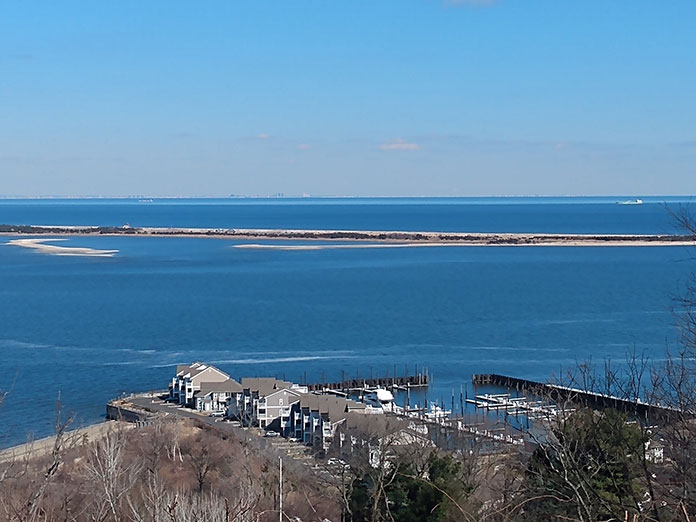
JERSEY SHORE – From shifting weather patterns to larger, more powerful storms and increasingly frequent flooding events, climate change is a problem on a global scale. It is not news that the average temperature of the Earth is slowly rising on a yearly basis, due to the steady increase of fossil fuel consumption and the resultant greenhouse gases that are produced by the modern industrial age.
For those in the New Jersey real estate market searching for the perfect beach front home, a reconsideration of that dream may be in order. As ocean levels rise worldwide, it has a variety of disastrous environmental effects on wildlife, residential areas, and surrounding landscapes. Given that 40 percent of the world’s population lives 60 miles or less from a coastline, the potential problems of ever-rising ocean levels become obvious. But while this is a problem that may be one that affects every area on the planet, the crisis is worse for residents in New Jersey.
The prevailing evidence for rising ocean levels is that because the climate is warmer it is melting the polar ice sheets and glaciers, thereby putting more liquid water into the oceans and causing them to rise. But that is only a part of the problem. Because the world is heating up, it makes the oceans become warmer, which in turn, causes them to expand. In fact, it is estimated that one-third of sea level rise is due to thermal expansion. It’s this process that causes previously acceptable sea levels to now become more prone to producing flooding conditions.
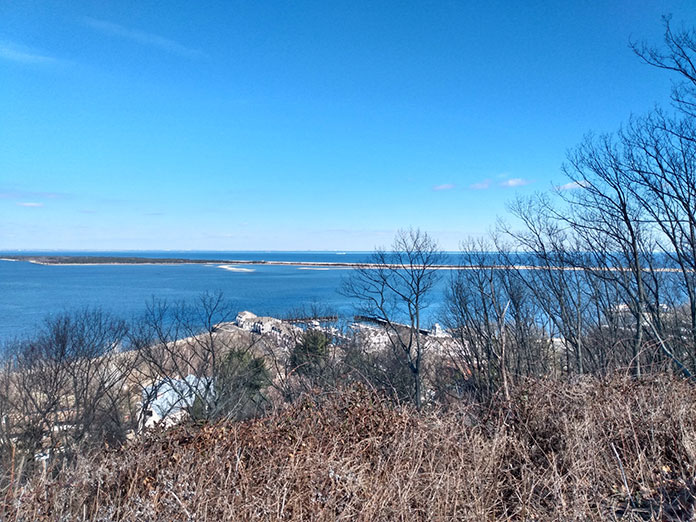
The rate at which sea levels rose during the Twentieth Century has been the fastest increase in the last 2000 years. In the period from 1911 to 2019, ocean levels rose approximately 7.6 inches as a global mean. Compare that to New Jersey, where sea levels rose a full ten inches more than the planetary average. What phenomenon is at play along the coastline of New Jersey that sea levels rose 17.6 inches over the same 108-year period?
Starting in the 1990s, sea levels began to be measured and recorded with the use of satellites. This accuracy has shed light on the specific challenge that New Jersey, as well as the rest of the Mid-Atlantic region of the United States faces, namely, the phenomenon known as subsidence.
“Subsidence is basically the sinking of land,” explains Postdoctoral Associate Jennifer Walker of the Department of Earth and Planetary Sciences at Rutgers University. Because of the geographic position of New Jersey, which sat at the southern terminus of the ice sheet that covered our region during the last ice age, the ground beneath our feet has been settling for thousands of years. Further subsidence is hastened by ground water withdrawal for human use and consumption.
“As you’re pulling more water out of the ground, you’re now creating more space in the land and the sediment compacts,” explains Walker, “and you get sinking that way, as well.” In short, the Mid-Atlantic region of the United States is settling, or more specifically, sinking, causing faster rates of sea-level rise than the rest of the world as a whole.
As the melting of glaciers and ices sheets continues, their potential to wreak havoc cannot be overlooked. As carbon dioxide levels rise, thereby driving up temperatures, more ice melts at an accelerated rate. Ice is very reflective, and as it melts, it exposes land, which is darker – which then absorbs more heat – thereby accelerating the process.
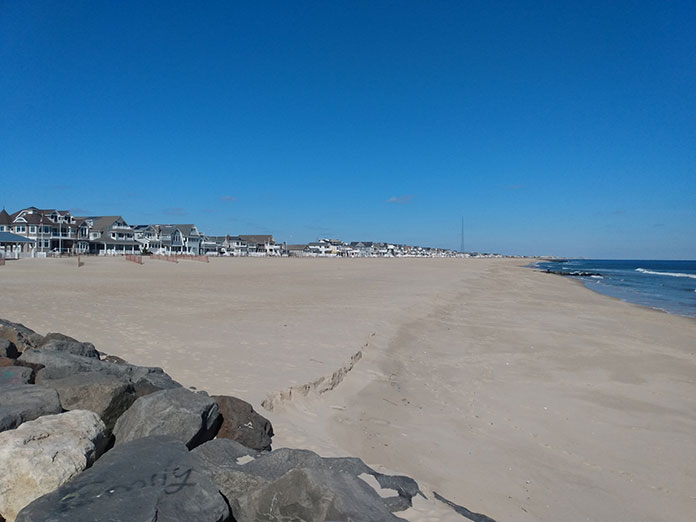
But that’s only part of the problem. There are areas of the world where the ice acts like a cork, holding other greenhouse gases like methane trapped beneath its surface. With that cork gone, the methane is free to enter the atmosphere, where it adds to the ever-increasing mixture of man-made greenhouse gases from the burning of fossil fuels, once again accelerating the process.
“It all comes back to reducing greenhouse gas emissions if we want to slow the trend,” warns Walker. “So obviously the top priority should be reducing fossil fuels, [and] reducing greenhouse gases to minimize the future impacts.”
As one might expect, the largest ice sheets in the world present the biggest threat. The Greenland ice sheet, were it to melt entirely, would raise ocean levels by 20 feet. That would be catastrophic, but it pales in comparison to Antarctica, whose melted ice sheet would raise ocean levels worldwide by 200 feet.
Flooding in areas along New Jersey’s coastline from Cape May County to Monmouth County is becoming more frequent, with the duration of the floods lasting longer. Local news broadcast will show pictures of homes and streets flooded, but the cost to the ecosystems of local flora and fauna is dramatic. It is not uncommon to see stretches of “ghost forests” in areas along the shore regions of the Garden State, where trees along coastlines have been killed from saltwater reaching farther inland due to sea level rise and flooding.
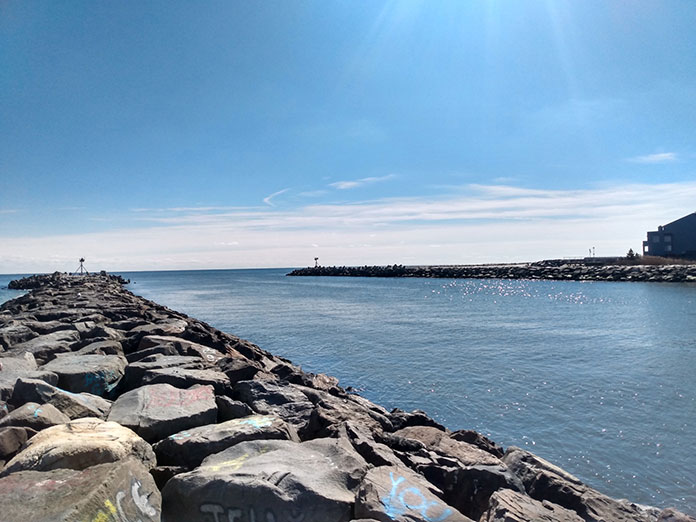
“So far, salt marsh ecosystems have been able to keep pace with sea level rise,” says Walker, “but when you get to a certain rate of sea level rise which is probably around seven millimeters per year, those marshes won’t be able to keep pace anymore.” It is estimated at current rates, ocean levels will rise more in the next 30 years than in the past 100, which will lead to more frequent and longer-lasting flooding.
“In New Jersey, we’re likely [to experience sea level rise of] two-to-five feet by the end of the century under moderate emissions scenarios,” cautions Walker, especially if we continue with the “current kind of global policies. The true culprit we should be thinking about [is] consumption, the burning of fossil fuels and the production of greenhouse gases.”
Does that mean that the Manasquan Inlet will no longer be the northernmost starting point of the Intracoastal Waterway, or that we will one day be pointing to the Island of Sandy Hook?
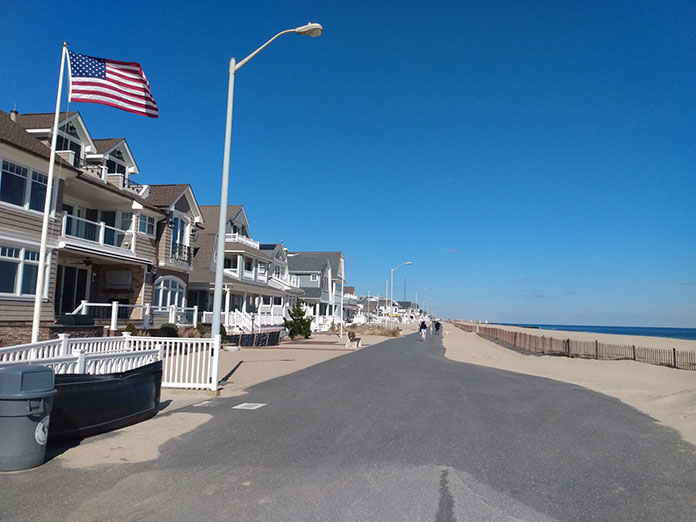
“It could be,” admits Walker. “It all depends on individual locations’ elevation above sea level and other localized impacts like groundwater withdrawal, where you have extra sinking of land in certain areas.”
But worst-case scenarios are not a foregone conclusion. While many scientists like Walker warn that the situation is precarious, it’s not too late to take steps to slow or curtail the process. “There’s still a choice,” concludes Walker, “in how much sea level rise we’re going to be dealing with in the future.”






